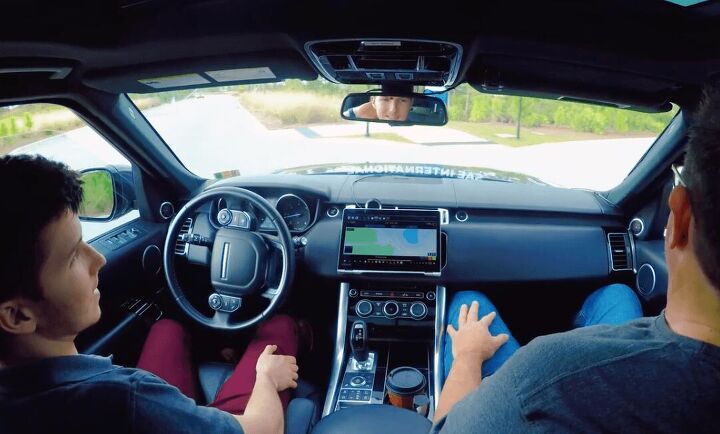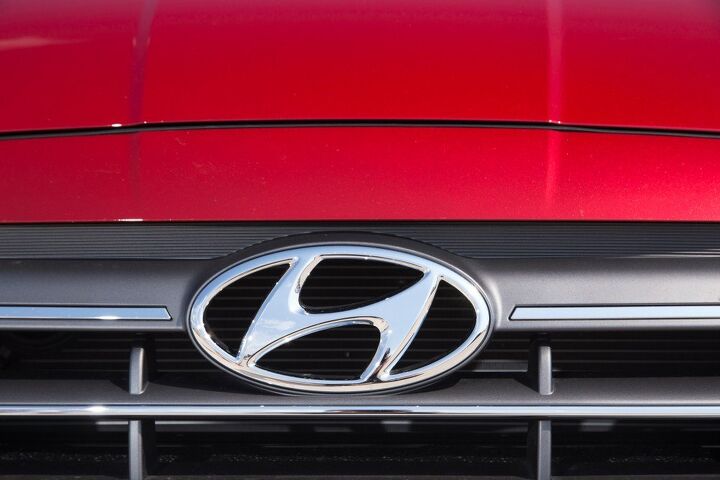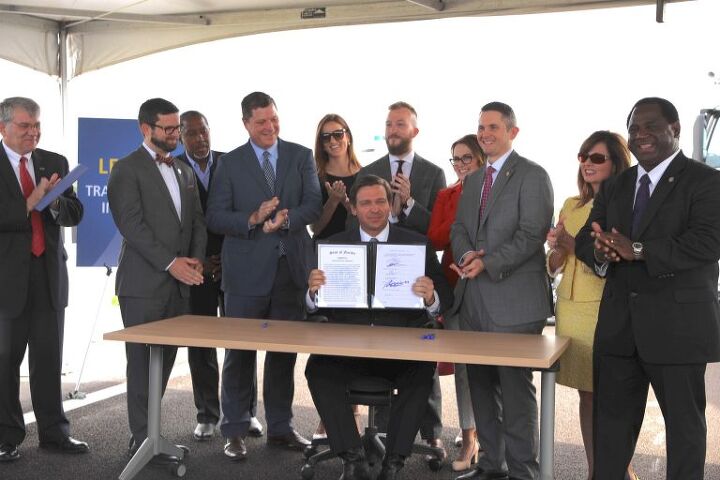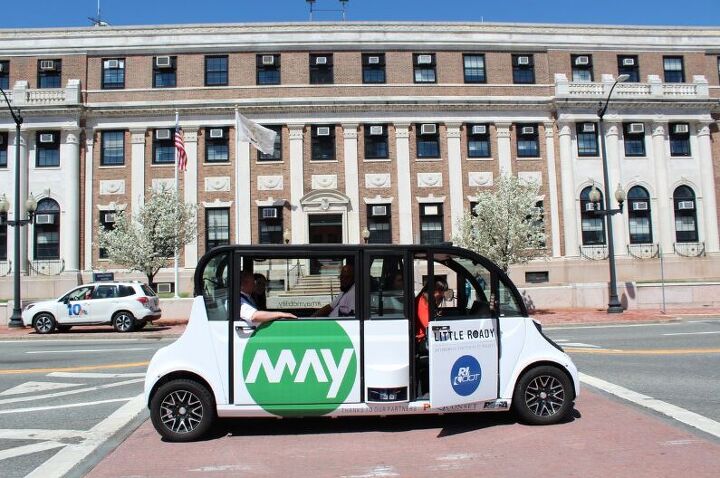#Self-drivingCars
NTSB: Autonomous Uber Vehicles Crashed 37 Times Before Fatal Accident
The National Transportation Safety Board (NTSB) has disclosed Uber’s autonomous test fleet was involved in 37 crashes over the 18-month period leading up to last year’s fatal accident in Tempe, AZ. Having collected more data than ever, the board plans to meet on November 19th to determine the probable cause and address ongoing safety concerns regarding self-driving vehicles.
Reuters reports that the NTSB plans to issue comprehensive safety recommendations to the industry, as well demand oversight from governmental regulators, in the near future.
Unfortunately, the circumstances surrounding the fatal incident in Arizona are as unique as they are complicated — ditto for most other crashes involving AVs. While Uber’s test mule failed to identify the pedestrian in time, leading to her death, she was also walking her bicycle on a particularly awkward stretch of road. “The system design did not include a consideration for jaywalking pedestrians,” the NTSB said.
SAE Consumer Autonomous Driving Study Finds… Public Acceptance?
With the realities of autonomous driving growing increasingly apparent, the Society of Automobile Engineers (SAE) decided to conduct a survey to gauge public sentiment surrounding the technology. We’ve seen these studies before, noticing a lack of consistency. While several high-profile accidents relating to autonomous (or semi-autonomous) systems have clearly shaken people’s confidence over the last two years, we’re still seeing conflicting reports — and we don’t mean minor discrepancies, either.
The SAE survey, published on Tuesday, stated that 76 percent of respondents “think a self-driving car experience is similar or superior to a human-driven experience.” However, the American Automobile Association (AAA) released a study in March claiming 71 percent of survey respondents still had serious concerns with the technology, with only 19 percent claiming they’d even consider putting a loved one in a self-driving vehicle.
That’s a complete turn-around in just over six months. Perhaps we should look at how these surveys are being conducted and the type of questions being asked, because taking the SAE Demo Days Survey at face value makes it seem as though automated driving has finally gained public acceptance.
Uber Establishes Oversight Board for Self-driving Development
Uber has formed an independent board tasked with overseeing its autonomous vehicle program. As outsiders, they’ll have no official authority within the company. But the six-member group will have direct access to executive years, and will be using them to advise the business on how best to test and deploy new technologies.
Dubbed the Self-Driving Safety and Responsibility Board, the group was formed after one of Uber’s test vehicles struck and killed a pedestrian in March 2018. An external review commissioned by the company following the incident recommended the board’s formation, with support from the NHTSA.
Apple Co-founder Claims Autonomous Cars Aren't Happening
Apple co-founder Steve Wozniak has officially given up on autonomous vehicles, despite previously being a major proponent of their advancement. “I stepped way back [on] this idea of Level 5. I’ve really given up,” Wozniak at last week’s J.D. Power Auto Revolution conference in Las Vegas. “I don’t even know if that will happen in my lifetime.”
Automotive News reported the quote on Monday, noting that Steve’s tune has changed dramatically from the days where he optimistically saw Apple blazing the trail for advanced driving technologies — something that requires one to venture several years into the past. He’s been harder on the systems more recently, openly expressing his growing doubts since 2017.
“What we’ve done is we’ve misled the public into thinking this car is going to be like a human brain to be able to really figure out new things and say, ‘Here’s something I hadn’t seen before, but I know what’s going on here, and here’s how I should handle it,'” Wozniak explained. “A human can do that.”
Hyundai Gets Real About Autonomous Cars
Automakers have begun leveling with us about vehicular autonomy. After years of promises that self-driving cars were just around the corner, the vision rollback has begun. Testing has taken longer than anticipated and nobody is as close to unleashing a commercial product as they hoped to be. Waymo’s self-driving taxis are arguably the closest, but they’re still dependent upon human safety drivers. They also don’t stray far from areas of operation that have been repeatedly mapped and deemed safe.
While nobody has given up on the technology, claims are becoming less lofty. Realism is creeping into press releases and interviews, resulting in a more complicated pathway to autonomy. Hyundai Motor Group’s heir apparent, Vice Chairman Chung Eui-sun, recently announced the creation of a $4 billion self-driving joint venture with Aptiv, but the plan is more modest than what we’ve become accustomed to.
Automakers Asks NHTSA to Remove Autonomous Hurdles
The National Highway Traffic Safety Administration has been pretty good about letting companies test autonomous vehicles on public roads. And yet pretty much every automotive manufacturer, ride sharing firm and tech giant still wants laxer rules. To a degree, it’s understandable. Take General Motors, for example. Back in 2017, GM sought exemptions from NHTSA to deploy fully automated vehicles without steering wheels or pedals, but that would have placed the car in clear violation of preexisting safety standards — as they were not in line with the General’s vision of what a self-driving car should be.
GM’s autonomous division recently said the self-driving Cruise AV it had been prepping for the end of this year will likely have to be delayed. While development issues assuredly played a role in stalling the car’s commercial deployment, it could never have launched as initially designed anyway.
Earlier this year, the Federal Motor Carrier Safety Administration (FMCSA) and NHTSA asked for input regarding the testing of automated vehicles to help decide if the “removal of unnecessary regulatory barriers” would be a prudent move. You can probably guess the feedback received from the automotive and tech industries.
Uber Whistleblower: Autonomous Vehicles Need New Safety Metrics, Aren't Really Any Safer
Over the past year the automotive industry has carefully walked back the expectations surrounding autonomous cars. Yet pretty much any change in rhetoric constitutes retracted goals. With numerous companies predicting self-driving fleets of commercial vehicles before 2021, the bar couldn’t have been set much higher.
A lack of progress is partly to blame. However, a bundle of high-profile accidents have also shaken public trust — especially after it was found that Uber whistleblower Robbie Miller was trying to alert the company to issues with its self-driving program just days before one of the company’s autonomous Volvos was involved in a fatal accident with a pedestrian.
That’s not the half of it. In April, Miller released a study claiming self-driving vehicles were actually recording incident rates higher than that of your typical motorist. Contrasting data from the Strategic Highway Research Program (SHRP) and the California DMV, he concluded that autonomous test vehicles created more injuries per mile than the average human motorist with a few years of practice.
Another Study Shows Consumers Hesitant to Embrace Mobility
With automakers investing heavily into the development of electrified and autonomous vehicles, it might seem there is a gigantic consumer base ready and raring to go out and buy them. But every study we’ve encountered suggests the exact opposite. Electric cars are still limited to tech fetishists with regular folks occasionally deciding to become early adopters. Meanwhile, AVs are still in their infancy with engineers keen to document every baby step they take as the public remains ill-informed on their overall status.
It was presumed, however, that this would change as development progressed and “mobility” became more mainstream. But a new study from J.D. Power, backed by Survey Monkey, has showed — once again — this is not yet the case. Based on a 100-point scale, the duo’s 2019 Mobility Confidence Index yielded a score of 36 for self-driving vehicles and 55 for battery-electric vehicles.
Florida Governor Signs Bill Allowing AVs Without Human Safety Drivers
Florida Governor Ron DeSantis signed CS/HB 311: Autonomous Vehicles into law on Thursday, claiming the state has effectively removed “unnecessary obstacles that hinder the development of autonomous vehicle technology,” including human safety operators.
Provided that a vehicle meets all insurance requirements, Florida will no longer require AVs to operate with a flesh-and-blood person behind the wheel. However, those that do remain in the driver’s seat, will also be exempt from the state’s distracted driving laws.
Emphasis on Safety: Uber, Volvo Launch Next Generation of Autonomous SUVs
Uber Advanced Technologies unveiled the next generation of its self-driving SUV on Wednesday. Sticking with the Volvo XC90 as a platform, Uber stated that the latest prototypes should be capable of operating autonomously, adding that previous versions were not necessarily built with full autonomy in mind and required the presence of a safety driver behind the wheel.
While past versions of Uber’s test platform essentially retrofitted vehicles purchased from Volvo Cars, this new batch was co-developed with the automaker. Volvo said the project represents the “next step in the strategic collaboration between both companies.”
Volvo previously claimed that the cyclist killed by one of Uber’s autonomous test vehicles in 2018 might still be alive had the firm not tampered with the automatic emergency braking system all XC90s come equipped with. Uber’s latest SUVs utilize all of Volvo’s existing safety features, building on top of them with its own systems and creating as much redundancy as possible.
Fiat Chrysler Teams Up With Aurora to (Eventually) Leave Steering Wheels Behind
For some time, Fiat Chrysler has partnered with Waymo, providing Chrysler Pacificas for its partner’s fledgling autonomous ride-hailing business. Now, FCA has another partner.
Announced Monday, FCA has signed a memorandum of understanding with Aurora, maker of Aurora Driver — a package of hardware and software capable of Level 4 driving that the company hopes to sell to other companies.
GM's First Self-driving Car May Keep Manual Controls
This time last year, we were under the impression that General Motors’ first attempt at an autonomous vehicle would come without pedals, a steering wheel, or any other controls traditionally associated with driving. Cruise Automation, the GM subsidiary tasked with developing the vehicle, seemed confident it could deliver something that didn’t need to rely on human intervention to be truly safe. This promise was reiterated by GM in January of 2018 via a request to produce the car sans controls though federal exemption.
U.S. laws governing what constitutes a safe automobile were written before autonomous vehicles entered development, creating problems. It wasn’t evident to anyone that GM could legally manufacture a vehicle that lacked traditional controls, as existing laws stipulated that all automobiles had to have them. While the Department of Transportation has proven rather lenient on policing AVs in terms of testing, rewriting the Federal Motor Vehicle Safety Standards or providing exemptions was a bridge too far — especially when self-driving tech is new, frequently misunderstood, and backed heavily by corporate interests. The existing guidelines remain unchanged and new legislation pertaining to self-driving vehicles has stalled in Congress.
Apparently sick of waiting, General Motors now appears satisfied to just build AVs with manual controls.
It's My First Day: Self-driving Mobility Shuttle Pulled Over in Rhode Island
Self-driving shuttle company May Mobility expanded its operations to include Rhode Island this week. The state agreed to pay the firm $800,000 for the first year of operations, allowing it to get its six-passenger micro shuttles running between an Amtrak station and downtown Providence as part of an ongoing pilot program.
However, one of the shuttles was pulled over just hours after entering service for a rather baffling reason.
GM's Cruise Sees Another Billion-dollar Investment
General Motors’ self-driving vehicle unit, Cruise, has attracted new investors and an equity infusion of $1.15 billion as it continues work on its commercial fleet of autonomous taxis. The new investment, which effectively brings the operation’s valuation to $19 billion, is primarily fronted by Baltimore-based asset management company T. Rowe Price Associates Inc. and existing partners like SoftBank’s Vision Fund and Honda Motor Co.
“Developing and deploying self-driving vehicles at massive scale is the engineering challenge of our generation,” said Cruise CEO Dan Ammann. “Having deep resources to draw on as we pursue our mission is a critical competitive advantage.”
How Are Autonomous Vehicles Supposed to Make Automakers Money?
As we continue reporting on how costly mobility projects, connectivity, and autonomous development are weighing on automakers’ bottom line, readers want to know exactly when these endeavors will become profitable. While the path for data acquisition and in-car marketing is fairly clear, self-driving cars are new territory. But it’s all speculative. Logistical, ethical and regulatory issues abound — and legislators seem rather poorly informed on the technology in general.
For now, companies have a pass to test autonomous vehicles in limited quantities across the United States. The next move, which some firms (like Waymo) have already undertaken, involves adapting test-bed AVs for use in commercial fleets. Profitability is another matter, and concerns are mounting that the technology isn’t ready and might not be for some time.





























Recent Comments